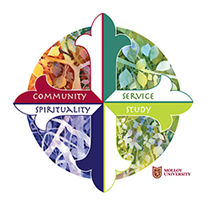Document Type
Conference Proceeding
Publication Date
2016
Journal Title or Book Title
Congrès Mondial de Linguistique Française
Volume
27
Version
Publisher's PDF
Publisher's Statement
© The Authors, published by EDP Sciences. This is an open access article distributed under the terms of the Creative Co mmons Attribution License 4.0
Abstract
The syntactic and phonological status of pronouns in Haitian Creole and French has been debated. The linguistic analyses formulated in the generative framework made a distinction between strong and weak pronouns or ‘pronominal clitics'. While strong pronouns behave like Determiner Phrases (SN), clitics differ with respect their syntactic distribution. These early analyses were based on judgments of grammaticality and a few of these were questioned when spontaneous speech corpora were made available and gave rise to quantitative and phonological analysis. The present comparative compares the personal pronouns of French and Haitian Creole. It is based the analyses of corpora- CHILDES (Demuth & Tremblay, 2008; MacWhinney, 2000) for the French and a new body that we compiled and transcribed for Haitian Creole. The analyses focus on the syntactic distribution of subjects and objects pronouns and their phonological realizations. On the basis of these analyse, we conclude that Haitian Creole bear all the characteristics of strong pronouns regarding their syntactic distribution while at the phonological level can be reduced and behave like clitics. In contrasct, French pronouns include strong and weak pronouns / clitic pronouns that differ in their phonological realizations and their syntactic distribution
Creative Commons License

This work is licensed under a Creative Commons Attribution 4.0 International License.
Recommended Citation
Barriere, Isabelle; Legendre, Geraldine; Joseph, Blandine; Kresh, Sarah; Guetjen, Prince Fluerio; and Nazzi, Thierry, "Le statut linguistique des pronoms du créole haïtien et du français: une étude de corpus" (2016). Faculty Works: CSD (2005-2023). 4.
https://digitalcommons.molloy.edu/csd_fac/4



